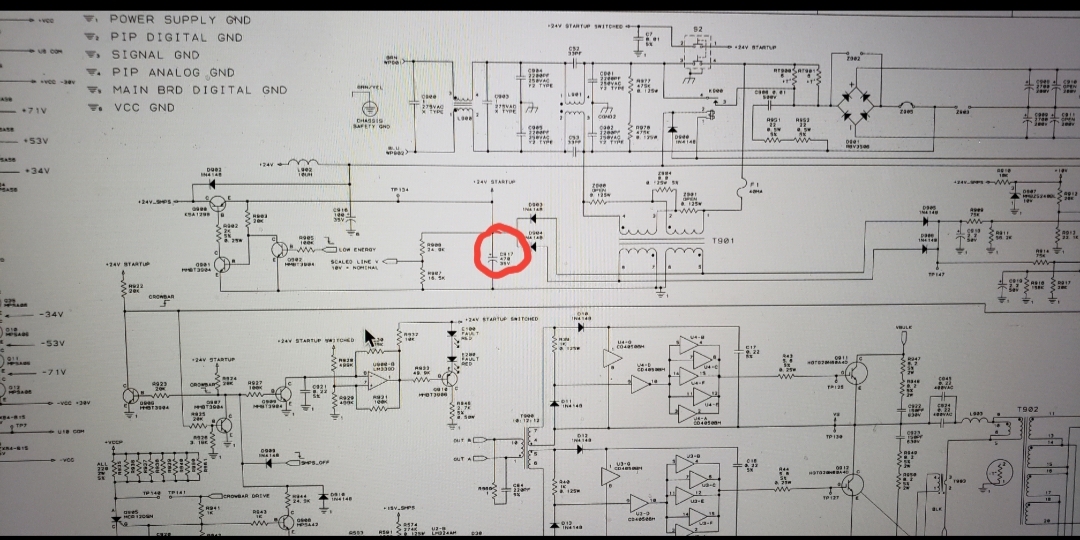So, for better or worse, I've decided to take a simple shot at fixing this thing. I started with the CTS600, because it doesn't have an "i" in its name  I'll save the CDi 1000 for later, maybe...
I'll save the CDi 1000 for later, maybe...
Crown, CTS600, no sign of life. Massively complicated piece of gear, but the good news is, the service manual is very good (evidently it is too large a file to post here--if anyone knows how to resolve that, I'll upload it).
So far, I've found that this electrolytic cap is failed.
I just took a picture of my screen with a camera, so if its not clear, I can certainly do something different.
I have absolutely no idea if that would completely kill the amp the way it is. Maybe it could, I dunno...

Thanks in advance for any of your thoughts / humor.
 I'll save the CDi 1000 for later, maybe...
I'll save the CDi 1000 for later, maybe...Crown, CTS600, no sign of life. Massively complicated piece of gear, but the good news is, the service manual is very good (evidently it is too large a file to post here--if anyone knows how to resolve that, I'll upload it).
So far, I've found that this electrolytic cap is failed.
I just took a picture of my screen with a camera, so if its not clear, I can certainly do something different.
I have absolutely no idea if that would completely kill the amp the way it is. Maybe it could, I dunno...
Thanks in advance for any of your thoughts / humor.
Comment